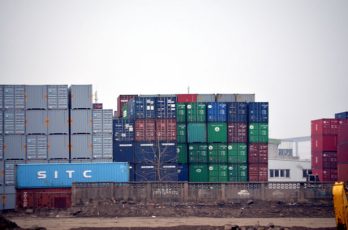U.S. Imports to West Coast Decline, Possibly Indicating Major Global Shift

In October 2021, US President Joe Biden announced that the California ports of Los Angeles and Long Beach were switching to a 24-hour, seven-day-a-week schedule to clear a months-long snarl. Supply-chain bottlenecks caused by the global coronavirus pandemic, compounded by unexpectedly high consumer demand, had created a five-lane maritime traffic jam.
As 2022 dawned, 109 vessels idled at the port of LA waiting to dock and offload. But a year later, the traditionally bustling ports of LA and Long Beach were confronting a lull of a different sort: significantly fewer containers being delivered to California.
After moving record volumes of cargo during the pandemic, the port of LA last August lost its 22-year title as the busiest port in the US, vanquished by its east coast rival, the joint port of New York and New Jersey. The watershed month marked New York and New Jersey’s busiest August since 1956, having moved 843,191 cargo containers.
Zero container ships waited off Southern California to unload on November 22-23, a first since October 2020, according to FreightWaves SONAR, a supply-chain intelligence firm.
In all, the port of LA moved 7 per cent less cargo year on year in the first 11 months of 2022. California’s contraction spelled gains for New York and New Jersey, whose port surpassed its peers to rank as the busiest for four consecutive months from August to November.
Experts say several factors accounted for the shift. Amid fresh memories of supply-chain bottlenecks during the pandemic’s darkest days, businesses were diversifying their supply chains to reduce their reliance on “one country and one port”.
Click here to read the entire report from Khushboo Razdan in the South China Morning Post.



